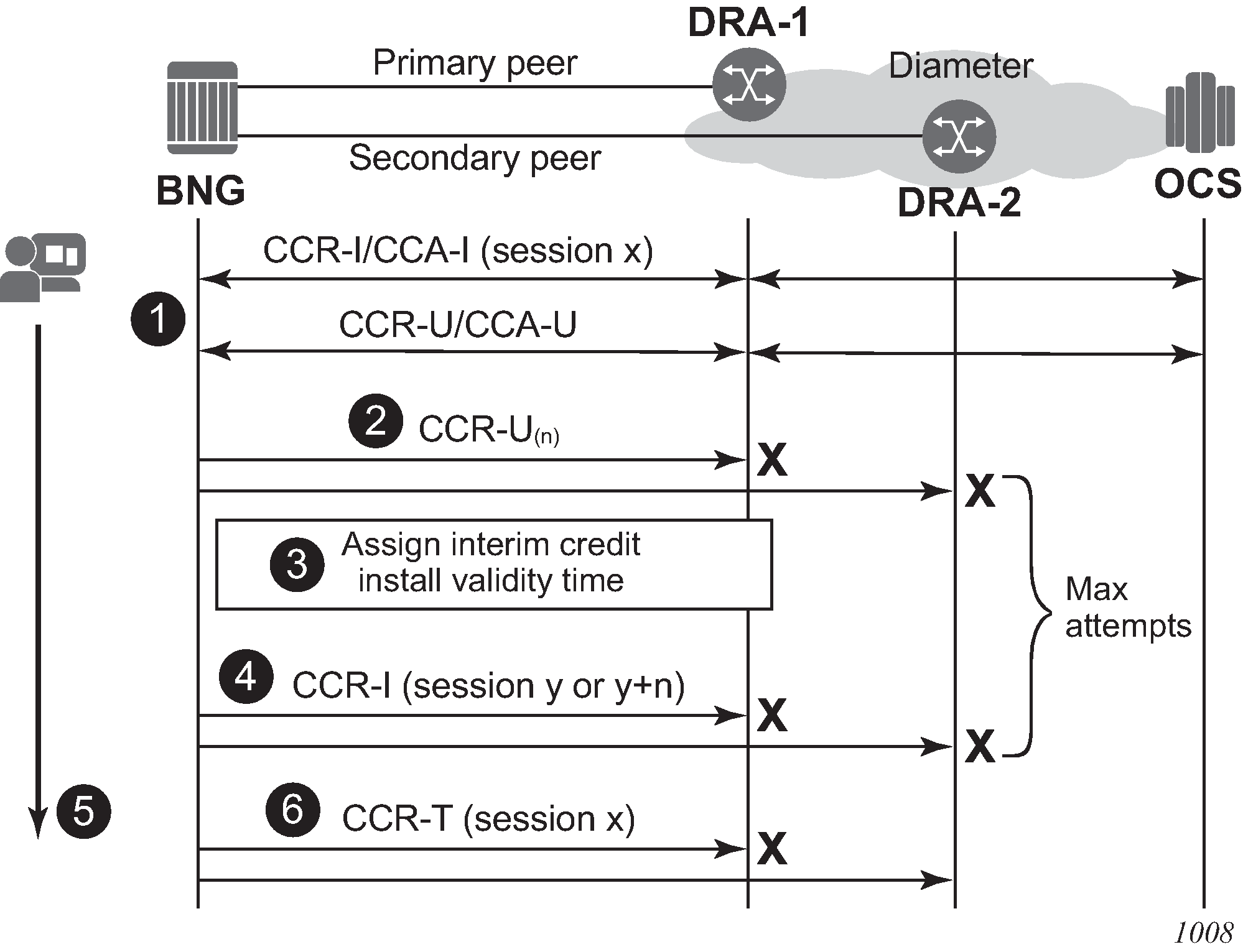The call flow in Figure: EFH call flow - maximum attempts reached shows a scenario where the maximum attempts is reached to establish a Diameter Gy session with the OCS.

A Diameter Gy session is in progress.
An update message sent to the primary peer times out or an error condition occurs that triggers Diameter Gy EFH. If failover is enabled, the CCR-U message is resent on the secondary peer. The CCR-U message sent to the secondary peer times out or an error condition occurs that triggers Diameter Gy EFH.
EFH becomes active for this user session. Interim credit is assigned to all rating groups and, optionally, a validity time is installed.
Interim credit is exhausted for a rating group or a validity time expires. A new attempt is made to establish the Diameter Gy session with the OCS; a CCR-I message is sent to the primary peer. A new session ID is used for the first attempt. For subsequent attempts, a configuration command determines if a new or the same session ID is used. A timeout or an error condition occurs that triggers Diameter Gy EFH to become active. If failover is enabled, the CCR-I message is resent on the secondary peer. The CCR-I message sent to the secondary peer times out or an error condition occurs that triggers EFH.
Steps 3 and 4 are repeated until the maximum attempts for interim credit is reached.
The user session is disconnected; that is, the subscriber hosts are deleted from the system.
When interim credit reporting is enabled, a CCR-T is sent, reporting the accumulated consumed interim credit: the unreported quota from the initial session x and the accumulated interim credit.